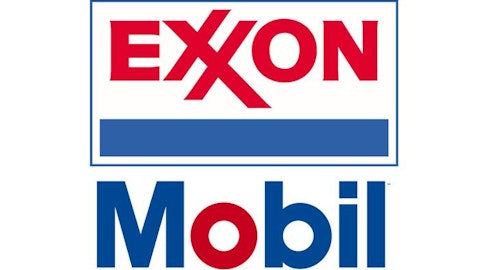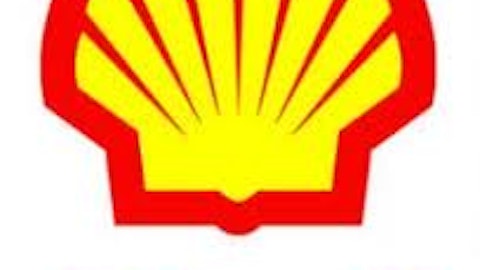There are many publicly traded, mega-cap energy stocks for investors to choose from. We’ve all likely encountered each of these companies in our daily lives and might assume they’re one and the same.
However, while the integrated oil majors might seem like nearly identical companies with extremely similar businesses, their shareholder practices are quite different. As a result, investors need to determine exactly what they value most from their stocks before jumping in to the sector.

Investors are likely well-accustomed to the big players within the energy sector. Exxon Mobil Corporation (NYSE:XOM), Chevron Corporation (NYSE:CVX), ConocoPhillips (NYSE:COP), and Royal Dutch Shell plc (ADR) (NYSE:RDS.B) are some of the most well-known in the industry, each with huge market capitalizations that are relied upon for steady profits and consistent dividend payments to shareholders.
Clearly, Exxon Mobil Corporation (NYSE:XOM), Chevron Corporation (NYSE:CVX), ConocoPhillips (NYSE:COP), and Royal Dutch Shell plc (ADR) (NYSE:RDS.B) all have similar operations. Investors interested in gaining access to energy dividend-payers might be tempted to simply throw a dart and pick one out of the sector to invest in. However, that would be short sighted. In fact, there are stark differences in how each company distributes its earnings to shareholders.
Exxon Mobil Corporation (NYSE:XOM) and Chevron Corporation (NYSE:CVX) are the two lowest-yielding of these oil majors, with dividend yields of 2.8% and 3.2%, respectively. While these are certainly reasonable yields that compare favorably to the roughly 2% yield available on the broader market, income investors who focus on current yield can find bigger dividends in the space.
For example, ConocoPhillips (NYSE:COP) and Royal Dutch Shell plc (ADR) (NYSE:RDS.B) are much more aggressive in how much cash flow they distribute to their shareholders. The two oil majors currently yield 4.2% and 5.3%, respectively, several hundred basis points better than the yield on both the S&P 500 as well as their Big Oil competitors.
Income now, or income later
Of course, there’s often a cost to abnormally high dividend yields, which is lower dividend growth over time. It stands to reason that companies that pay out a significantly higher percentage of earnings as dividends often can’t afford to raise their payouts as much, and in the case of these oil companies, that holds true.
Exxon Mobil Corporation (NYSE:XOM) and Chevron Corporation (NYSE:CVX) are premier dividend growth stocks, with the track records to prove it. Exxon Mobil Corporation (NYSE:XOM) increased its dividend by 21% in 2012 and then again by 11% early this year. Chevron Corporation (NYSE:CVX), meanwhile, recently provided its investors with a solid 11% dividend increase and has raised its shareholder payout by 9% compounded annually over the past five years.
ConocoPhillips (NYSE:COP) and Royal Dutch Shell plc (ADR) (NYSE:RDS.B) have grown their payouts at lower rates than Exxon Mobil Corporation (NYSE:XOM) and Chevron Corporation (NYSE:CVX), due to their heftier current dividend levels. To illustrate, ConocoPhillips (NYSE:COP) hasn’t raised its dividend since early 2011. For its part, Royal Dutch Shell plc (ADR) (NYSE:RDS.B) did recently bump up its dividend by 4.6%, but over the past five years, the company has grown its distribution by only 2% compounded annually.
The Foolish takeaway
In the end, what we’ve got here are four highly profitable energy companies that reward their shareholders generously through reliable quarterly dividends. While the differences in how each stock distributes dividends to shareholders might seem subtle, these differences mean each of these stocks might appeal to different investor groups.
Dividend growth investors, or in other words, those with longer time horizons with more time to let their dividends compound, should favor ExxonMobil and Chevron. Those two companies are growing their payouts at higher rates, and after several decades, will compound to greater income levels.
On the other hand, investors in need of current income should prefer ConocoPhillips (NYSE:COP) and Royal Dutch Shell plc (ADR) (NYSE:RDS.B). For example, those investors in or nearing retirement who need income now will be able to produce higher income levels from these two stocks. While their payouts won’t grow as fast over longer periods of time, some investors simply need current income to help pay for life’s inevitable expenses.
No matter which camp you fall into, the energy sector has a stock for you.
The article Not All Oil Dividends Are Created Equal originally appeared on Fool.com.
Robert Ciura has no position in any stocks mentioned. The Motley Fool recommends Chevron.
Copyright © 1995 – 2013 The Motley Fool, LLC. All rights reserved. The Motley Fool has a disclosure policy.



